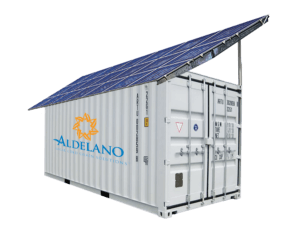In a well-ordered laboratory in Owings Mills, a suburb of Baltimore, an engineer has been perfecting a device that might be called the missing link in renewable energy.
Now, it is ready to begin its transformative role in electric generation, bringing electricity to the remotest places in America and adding it to the grid.
It is an invention that could cut the cost of new wind turbines, make solar more desirable, and turn tens of thousands — yes, thousands — of U.S. streams and non-powered dams into power generators without huge civil engineering outlays.
The company is DDMotion, and its creative force is Key Han, president and chief scientist. Han has spent more than a decade perfecting his patented invention, which converts variable inputs into a constant output.
In a stream, this consists of taking the variables in the water flow and turning them into a constant, reliable shaft output that can generate constant frequency ready to be fed to the grid. Likewise with wind and solar.
Han told me the environmental effect on a stream or river would be negligible, essentially undetected, but a reliable amount of grid-grade electricity could be obtained at all times in all kinds of weather.
He has dreams of a world where every bit of flowing water could be a resource for many power plants, and the same technologies would be essential in harnessing the energy of ocean currents.
A further advantage to Han’s constant-speed device is that it has a rotating shaft, which is a source of what in the more arcane reaches of the electrical world is known as rotational inertia. Arcane, but essential.
This is the slowing down of something that was once moving briskly, like stopping a car. In power generation, this can be a few seconds, but it is necessary to enable an electrical system to keep its output constant — 60 cycles per second in America, 50 cycles per second in Europe and parts of Asia. If that varies, the whole system fails. Blackout. Then, the system must be re-calibrated, and that can take days or several weeks for the entire grid.
Electricity needs rotational inertia. This isn’t a problem with fossil-fueled plants: There is always rotational inertia in their rotating parts.
Wind power loses its inertia, which is there initially as the wind turns a shaft, but is lost as the power generated is groomed for the grid. It passes through a gearbox, then to an inverter, which converts the power from direct current to grid-compatible alternating current.
Han says using his technology, the gearbox and the inverter can be eliminated and inertia provided. Also, most of the remaining hardware could be on the ground rather than up in the air on the tower, making for less installation cost and easier maintenance.
Loss of inertia is becoming a problem for grids in Europe, where wind and solar are approaching half of the generating load. Germany, particularly, must create ancillary services.
Han told me, “DDMotion-developed speed converters can harness all renewable energy with benefits. For example, wind turbines can produce rotating inertia, therefore ancillary services are not required to keep the grid frequency stable, and river turbines without dams can generate baseload, therefore storage systems, such as batteries and pump storage are not required.”
DDMotion has been supported primarily by Alfred Berkeley, chairman of Princeton Capital Management and a legend in the financial community. He served as president of Nasdaq and later as its vice chairman.
Han, who holds patents relating to his work on infinitely variable motion controls, began his career at General Electric before founding DDMotion in 1990. A native of South Korea, Han attended college in Montana to fulfill his dream of becoming a professional cowboy. His resume includes roping and branding calves one summer.
If DDMotion succeeds as Han and his supporters hope, their missing link will vastly enhance the value of renewable energy and bring down its cost to the system and consumers.



